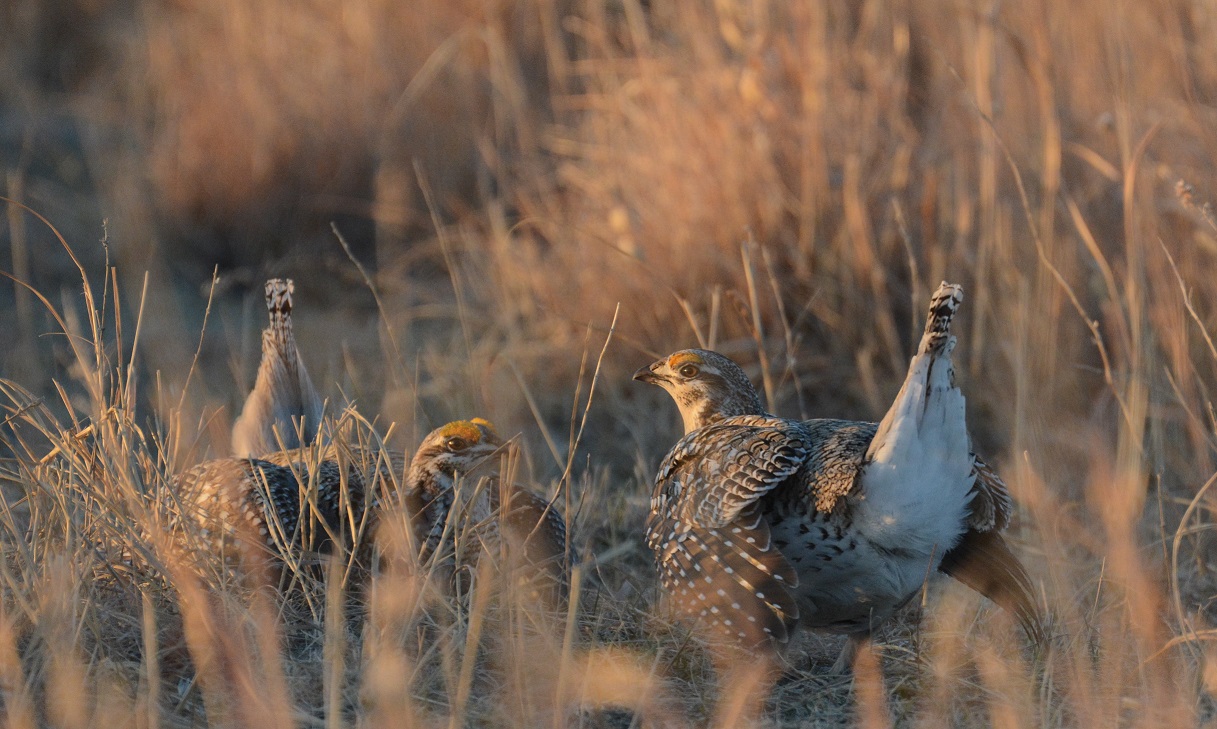
Joshua Haiar/South Dakota Searchlight
At least $134 million in federal conservation funds approved by Congress and awarded for conservation-related projects across South Dakota were frozen in the early days of the Trump administration.
A recent court order could put the money back in circulation, but the administration has yet to signal if it will fully comply. U.S. District Judge Mary McElroy of Rhode Island, who was nominated by President Donald Trump in 2019 during his first term in office, ordered the administration to release the funding last week.
The following day, the administration filed notice that it intends to comply with the nationwide order. On Sunday, however, the organizations that sued over the funding freeze filed their own notice, saying that the grant funds “remain inaccessible” even after McElroy’s order.
Angela Ehlers is the executive director of the South Dakota Association of Conservation Districts. Her organziation is not a party to the lawsuit, but has been awarded some of the funds now in dispute and works closely with other grantees affected by the executive order.
The money flowed through the Inflation Reduction Act, and were paused under direction from the U.S. Department of Agriculture after a Jan. 20 executive order from President Trump. The Inflation Reduction Act was authorized by Congress and signed into law under former President Joe Biden in 2022.
Ehlers said there’s been no clear sign of if or when they’ll be restored since the Jan. 20 0rder, which has been a frustration for those relying on them.
“These aren’t regulatory programs,” Ehlers emphasized. “They’re voluntary, and the fact that they’ve been frozen without explanation creates a chilling effect across the entire landscape.”
The pause impacted billions in conservation spending nationwide and sparked the lawsuit that led to last week’s order from Judge McElroy. Projects designed to support beginning farmers have also stalled.
Ehlers said her association had partnered with South Dakota State University to support young producers entering agriculture through sheep and goat production. The grant-funded effort is meant to offer a way into agriculture for young producers but doubles as a conservation measure, because sheep and goat production requires less land and capital than cattle or grain farming.
“There’s a real opportunity here,” Ehlers said, but added “we just don’t know” if the grant funding will continue.
Leaders in water quality and habitat restoration programming along the Big Sioux River are in a similar wait-and-see scenario.
Most watershed project funding remains available, according to Jay Gilbertson, manager of the East Dakota Water Development District. But staff losses and hiring freezes have undercut the delivery of on-the-ground support.
“Even if you don’t reduce the program funding, who’s going to do the work?” Gilbertson said. “If you fire someone who’s approving payments or working directly with farmers, it creates a massive gap in capacity.”
Travis Entenman, director of Northern Prairies Land Trust and Friends of the Big Sioux River, said the downstream impacts of federal uncertainty are already reaching local landowners. The Environmental Quality Incentives Program (EQIP), which helps farmers and ranchers integrate conservation into their operations, has seen funding pauses, he said. That’s left some landowners without reimbursement for practices they installed on the promise of repayment.
“Some of it’s open, but there’s still money frozen,” Entenman said. “And these programs are often receipt-based, meaning landowners put their own money on the line expecting reimbursement.”
Frozen conservation funds in limbo:
$51 million in climate-smart agriculture projects:
- $25 million to Ducks Unlimited to restore 25,000 acres of grassland and help ranchers better manage grazing.
- $18.3 million to South Dakota Agricultural Land Trust to offer easement payments to conserve 8,000 acres of ranchland near the Black Hills.
- $8 million to South Dakota State University to help farmers identify unprofitable acres and suggest better land uses.
$83 million in grassland and conservation grants:
- $24 million to Pheasants Forever & Quail Forever to use prescribed fire to remove invasive Eastern red cedar trees and restore prairie grasses on up to 125,000 acres.
- $21 million to InterTribal Buffalo Council to restore native grassland ecosystems using sustainable buffalo grazing practices across tribal lands.
- $20 million to The Nature Conservancy to purchase voluntary conservation easements on 20,000 acres in western South Dakota to prevent development.
- $11 million to South Dakota Second Century Habitat Fund to convert low-quality cropland into grasslands suitable for grazing and haying.
- $5 million to The Buffalo Nations Grasslands Alliance to identify and restore marginal croplands across 16 tribal nations.
- $1.2 million to The Sisseton Wahpeton Oyate to create a tool to measure the environmental impact of agriculture on the reservation.
